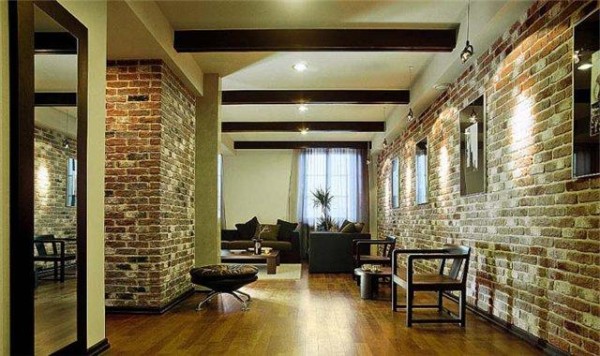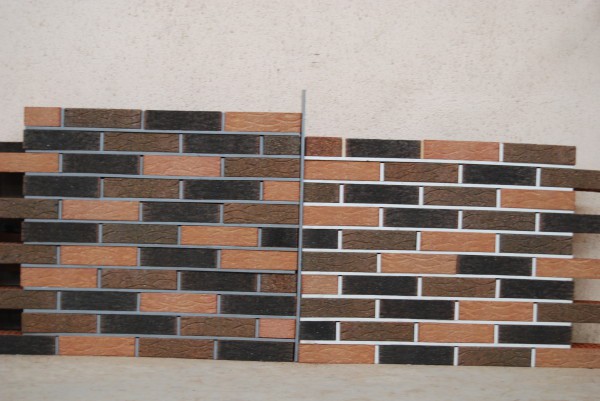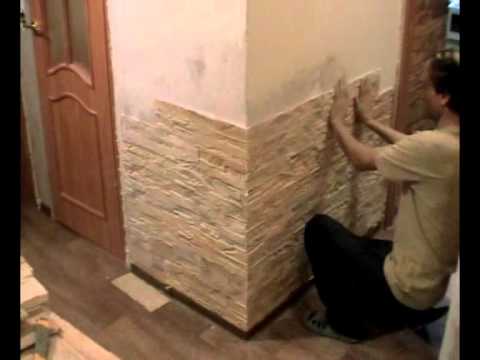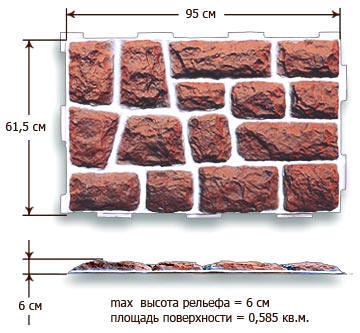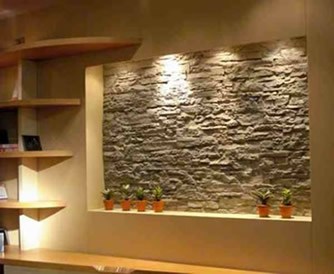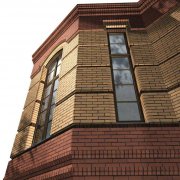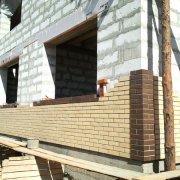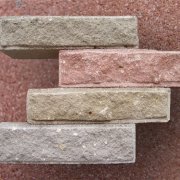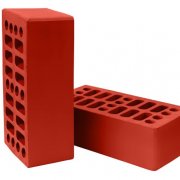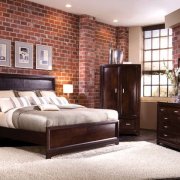Brick Interior: Interior Design
Brick interior decoration is quite common. This is due to the fact that the material itself has a rather unusual design and for some rooms it creates a unique interior.
The content of the article
Bricklaying Combination Options
Brick interior decoration can be performed on any surface. For this, at the moment there is a huge amount of modern materials.
Combinations:
- Quite interestingly, this type of cladding is combined with plaster or stone, which can be natural or decorative.
- Adhesion to an adjacent surface with brick finish.
The photo shows examples of such a room decoration.
Materials that can be used for masonry
Brick interior decoration is carried out today with the following materials:
- Directly with a brick or its decorative appearance.
- Panels with imitation brickwork.
- Porcelain or ceramic tiles under the brick.
- Artificial stone.
Brick for decoration
In order to decorate the room with it, I use silicate or another type of brick. Mount such material on the surface does not work.
Walls are erected from it, which have high strength and durability.
Characteristics:
- The brick is moisture resistant and is not capable of perceiving moisture and pollution on its surface. It does not burn and is resistant to all temperature fluctuations. He is not afraid of frost.
- The dimensions of such finishing bricks can be standard, as in building. As a rule, the brick is hollow, which allows to increase the thermal insulation properties of the decoration of the room.
Note. The color scheme of bricks is quite diverse. The laying of the material is carried out similarly to the laying of building bricks. For this, a concrete solution is used. Its thickness during masonry should not exceed 1 cm.
Decorative brick in decoration
Unlike building bricks, decorative has slightly different properties and characteristics. Its color scheme is much wider, which makes it possible to create a unique interior of the room.
There is:
- Red and white.
- Yellow and brown.
- Green and burgundy and others.
Consider the materials in more detail:
- The weight of the material is also less and it does not have full-scale shapes and sizes, like a brick for construction. In appearance decorative brick It is a small panel, the height and length of which correspond to the size of the brick.
- The thickness of such panels is not more than 1 cm. Such bricks are made for interior decoration from clay dough or concrete mortar. In this case, various production technologies are used.
- The surface of the material may be smooth or structural. There are rough surfaces. It is they who are very popular in the decoration.
Facing brick of this type has:
- Durability and practicality. Thanks to the latest technologies for manufacturing the material, its surface is not able to perceive the effects of moisture and dirt and for this reason does not require careful maintenance.
The life of bricks is almost unlimited. - Wear resistance, since the external design for the entire period of operation does not change. The structure of the material remains the same.
- Fire resistance and frost resistance. It does not respond to the effects of various temperature conditions.
- Durability. On its surface, a brick can withstand fairly large mechanical and physical influences.
Surface preparation for the installation of decorative bricks
All works of this type are performed quite simply and are similar in principle to the installation of ceramic tiles.
The surface should be well prepared. To do this, it is cleaned, leveled and primed.
Tip. If the surface is flat, then it will not be necessary to level it again. The most important thing is to clean and prime it correctly.
Work:
- Initially, layers of paint and plaster that have already moved away from the surface are eliminated. Paint is washed off with a special tool, and plaster - with a spatula and a hammer.
- After that, it is applied to the areas that remained without plaster and it is well processed after drying with sandpaper. Then the surface is washed and only then primed.
If you want to completely align the entire surface, then you will need to use:
- Drywall.
- Stucco.
Tip. Drywall is not recommended for leveling surfaces in rooms with very small quadrature.
So:
- This is due to the fact that the material is attached to a profile metal frame, which is prefabricated on the surface. It has a certain height, which is at least 4-5 cm.
- The joints of the drywall sheets are masked with putty and only then primed. It is already possible to mount any finishing material on them.
- The use of plaster is characterized as a very long and rather laborious process. Initially, a layer of starting plaster is applied to the surface.
After that, the finish line is used. Everything is processed in the process of leveling with sandpaper.
Tip. It is worth considering that the “start” plaster has a coarse-grained structure and you need to process it only with rough sandpaper.
- To ensure that each layer of plaster is even, a building level and a special mesh are used, which is attached to the surface before work.
- Plaster is also primed.
Tip. Primers for the surface are carried out without fail, as they can increase the strength of the finish bond with the surface itself.
Installation of decorative bricks
Work on fixing on the surface of decorative bricks is easy to do with your own hands.
For them you will need:
- Tile cutter or other device for cutting material.
- The construction level, ensuring smooth installation of each brick.
- A solution of glue or concrete.
- Spatula.
Work:
- In order to prepare a concrete solution there is an instruction according to which sand and concrete are poured into a container of a certain size in a ratio of 1 to 3. Water is added during the mixing process.
Tip. For such actions, it is best to use a concrete mixer or a construction mixer.
- The solution is applied to the surface of the wall, not to the back of the material. The thickness of its layer should not exceed 0.5 cm.
Brick for interior decoration is laid at a certain distance from each other. Its size can be 0.2 or 0.3 cm. For this, cruciform beacons are used.
Brick trim panels
Inner wall decoration brickwork is often done with decorative panels, on the surface of which there is an imitation of brickwork.
They are made from:
- Aluminum sheet.
- Plastic.
- Siding.
Material Feature:
- The material is distinguished by its practicality. All types of panels are moisture resistant and are not able to absorb dirt on their surface.
They are durable, as they can be used for 15-20 years. The price for them is quite different.
It all depends on the cost of raw materials. The cheapest are plastic panels. - They do not burn and freely perceive the effects of high and low temperatures. The weight of the panels is small and for their installation will not need to strengthen the surface.
Only here it is worth considering that the surface must also be prepared.
Surface preparation for panel mounting
The preparatory work includes the construction on the surface of the crate.
Tip. Leveling the surface for such work is not required.
The crate is made of:
- Wooden planks.
- Metal profiles.
Tip. For rooms in which there is a very high humidity, it is best to give preference to metal profiles.
Stages of work:
- The crate is mounted using dowels and screws. In the process of work, in addition to finishing, it is possible to make insulation of the room.
For this, there is polystyrene and polystyrene foam. - These materials go in layers and are quite simply cut with the help of a clerical knife.
Tip. In order for the insulation to fit tightly into the cells of the crate, you need to cut it in accordance with the size of the cells.
All joints of the material with the crate are coated with mounting foam.
Installation of decorative panels
Installation of such material is performed on the prepared surface is quite simple.
Special glue or self-tapping screws are used for this. It all depends on what the panels are made of.
Note. You will also need a material cutting tool. A hacksaw or scissors is suitable for metal, but a grinder for siding or plastic. The video shows the installation process of decorative panels.
Brick decorative stone
Artificial stone for brick can be made of:
- Acrylic
- Gypsum.
- Synthetic substances.
- Sand and concrete.
Characteristic:
- The dimensions of the stone can be similar to the size of the brick, only the thickness of the material is not more than 0.7 cm. The external design of artificial stone for a brick can be of different colors.
This allows you to create any room design. - The weight of such a material is very small. For its installation, unlike natural stone, it is not necessary to strengthen the surface.
For installation you will need:
- Special glue or concrete mortar.
- Building level.
- Tile cutter.
- Putty knife.
- Cruciform lighthouses and decorative putty.
It is quite strong and durable. Also, it does not absorb moisture and dirt.
It does not burn and does not melt. It is mounted very quickly and simply.
The principle of work is similar to the installation of decorative bricks or ceramic tiles.
